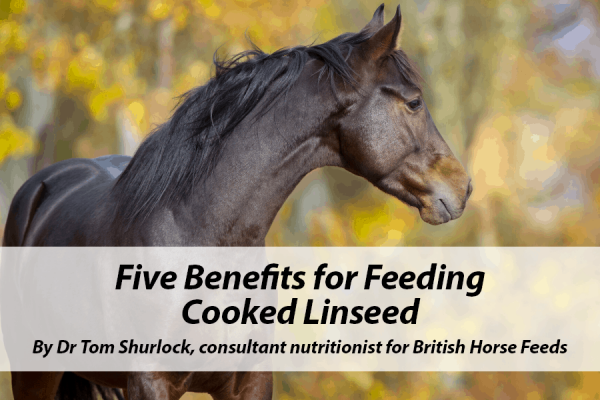• Ideal addition to any feeding regime. Cooked Linseed is beneficial to performance, condition, skin and coat and general health. The processing method, involving just gentle cooking and milling, improves the availability of the nutrients and allows greater utilisation of linseed and a higher digestible energy level. Cooked Linseed supports the horse’s well-being and all aspects of its activity and lifestyle.
• Feed a high-quality protein. The amino acid make-up of Cooked Linseed protein (its protein profile) complements that of forage protein and is well matched to aid skeletal muscle development and regeneration, and the structure of the vascular system. Cooked Linseed also has the potential to provide bioactive peptides, which support vascular function and blood pressure regulation, and also has antioxidative properties.
• Providing a source of oil rich in omega-3 fatty acids. Whilst Cooked Linseed contains good levels of omega-6, and -9, which supports vascular function and exercising muscle, it is particularly rich in omega-3. This has been shown to help the inflammatory cycle, immune function and allergy response. However, being high in omega-3, Cooked Linseed can help balance the omega-3:6 ratio as many feed stuffs are poor in omega-3.
• Excellent fibre profile for maximum impact. A good range of both soluble and insoluble fibres. Soluble pectins can help stimulate natural gut mucins that coat and protect the gut linings, whilst maintain good absorptive function. Lignified material bulks gut contents, stimulating motility, and the slow release energy form fibre fermentation complements from forage and super fibres.
• Nutrition giving a range of bioactives. Vitamins C & E (as Y-tocopherol), phenolics and flavonoids all act as powerful antioxidants, helping to maintain tissue structure and function; phytosterols help maintain vascular structure and function. Other bioactives maintain gut structure, function & integrity.






